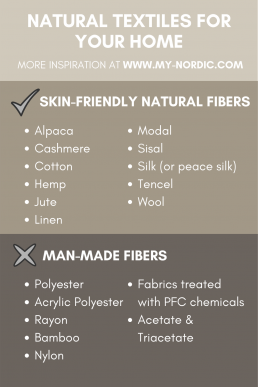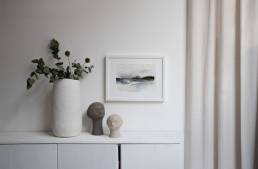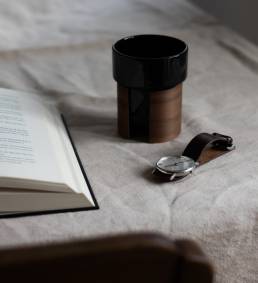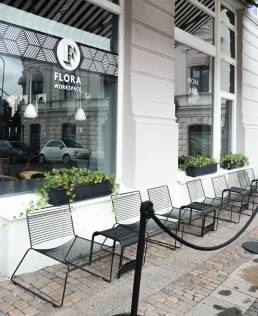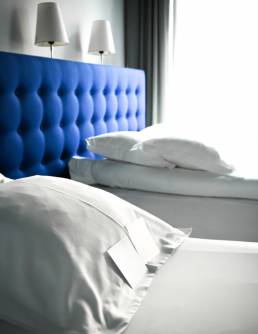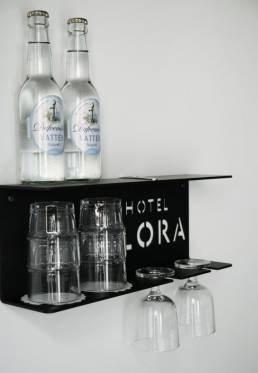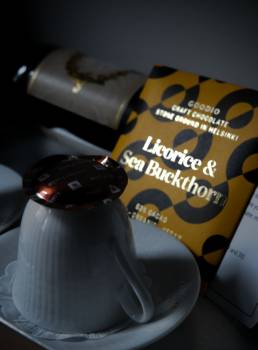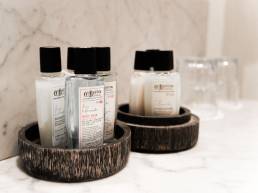DESIGN // ART & WELL-BEING
art and wellness
It’s almost instinctive to associate art with wellbeing and healing, and it’s easy to suppose that art’s impact on wellbeing is simply aesthetic. Art does have a powerful impact on an environment and, by extension, on our experience of that environment. It can humanise a harsh, clinical hospital hallway or enliven a dull office, emphasising the human and social functions of sterile or functional environments. Humanising and beautifying an environment has the effect of reducing anxiety and depression while improving general happiness and productivity – even serving for some as an inspiration for meditation or quasi-religious psychic renewal.
So, art and wellness go hand in hand. There is growing scientific evidence that proves art can enhance brain function. It has an impact on our emotions, brain wave patterns, the nervous system and can actually raise serotonin levels which make us feel happier. This fast pace that we all are living, it is very important to stop and enjoy just a moment painting and do nothing else.
When we observe a profound piece of art, we are potentially firing the same neurons as the artist did when they created it, thus making new neural pathways and stimulating a state of inspiration. This sense of being drawn into a painting is called “embodied cognition” says writer J. Devsney.
Former editor R. Smith of BMJ also made a very interesting point – ‘if health is about adaptation, understanding and acceptance, then the arts may be more potent than anything that medicine has to offer’.
"Art holds out the promise of inner wholeness."
— Alain de Botton, writer
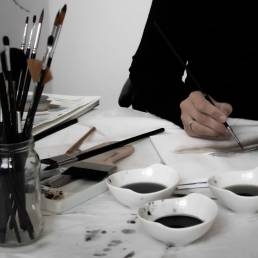
art gives purpose
Art can change our outlook and the way we experience the world. It can raise the spirits and strengthen the soul, it can help us make sense of our surroundings and change us and our society for the better.
Our wellbeing is first and foremost dependent on our emotional and mental state. Thus, creating interiors which support our overall wellbeing must include artwork that reflects the issues the inhabitant can understand and relate to. We can survive reasonably well in an interior that has no art, but it brings purpose, meaning and adds value to one’s life.
Including artwork in interior design doesn’t mean we have to spend considerable sums of money. We can easily find affordable pieces or art in a local market or side street, how much a piece costs should not define its’ real value to you. Digitalisation also allows many artists to publish print versions of their paintings that can be printed on either watercolour or canvas. I think it’s a great way to start bringing art into your home and doesn’t require a big budget.
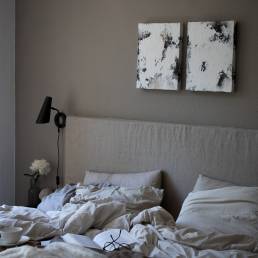
art is therapeutic
The strongest link between art and wellness is of course in therapy. Philosopher Alain de Botton explains very distinctly how art benefits individuals and is often used as therapy:
- Helps with memory by seeing something as it is instead of receiving too much information all at once
- Makes us appreciate situations and life, by looking at what we already have which in turn increases our feeling of happiness.
- Deals with feelings of sadness and sorrow
- Gives us balance and perspective
- Guides us to grow by assisting in self-knowledge which help us be better people
We believe art should start a conversation rather than dull it, conflicting opinions on art should be celebrated not avoided. If we have an emotional response to a piece of art then it is a success! Perhaps the meaning of art and wellness is that it’s there to support us in our feelings and to help us rediscover our sense of self.
As you can see, artwork is more than just a painting or photography hanging on the wall. It is closely connected to our well-being and has a constant effect on us. Were you aware of this? Now it’s your turn: place art in your surroundings that is pleasant for you and learn to appreciate its positive effect on your body and mind. Have fun!
Looking for more art in Scandinavian style? Then definitely check out my Pinterest board “Art I love”!
Love,

DESIGN // NATURAL FIBRES
Our skin is by far the body’s largest organ. So, it goes without saying that protecting and treating it well is very important and that extends to all of it, not just the small percentage on our face. From clothes, to bedsheets to towels, our skin is impacted by the natural fiber choices we make.
Even if you do not have sensitive skin, we recommend reading through this blog. It is lengthy but absolutely rammed with useful information that I guarantee will impact your next purchase. So bear with me.
Knowing where and what to look for in matters of sustainable materials can be quite empowering. I made you a little spreadsheet, so you can take a screenshot to your phone and the next time you are shopping, first take a quick peek to check which fibers is worth buying.
skin friendly natural fibers
Alpaca
Believe it or not, alpaca wool is one of the most ethical products currently available that is completely eco-friendly and cruelty-free at the same time. They’re not killed for their wool, but caught by the farmers and gently sheared. This is why many vegans wear alpaca wool products. Alpaca fibre and wool does not contain fat or allergenic lanoline, so no strong chemicals are needed to clean it. This makes it an environmentally friendly fibre too!
Cashmere
One of the rarest and most luxurious fibres in the world. This exceptionally silky material is said to be three times as warm as wool and is known to be long-lasting. Cashmere doesn’t come from sheep, but from goats! It is a natural fabric, though there are huge environmental and social impacts arising from this material. In short, it takes 4 goats to make 1 cashmere jumper as opposed to 5 jumpers being made from 1 sheep… it’s easy to do the maths. It’s so bad that ASOS has band cashmere and mohair from its site! My recommendation is to buy recycled or reused cashmere.
Cotton (made organically)
A natural fibre that is capable of quick biodegrading once discarded, cotton is a classic and useful material. Unfortunately, conventionally grown cotton requires a significant amount of water to grow and like many crops uses an abundance of harsh pesticides and insecticides. Choosing organic cotton will not solve the water issue though does help to reduce the negative impacts of pesticides on our environment.
Hemp
Hemp is a dense plant that requires no pesticides or herbicides to keep it healthy. The material is made from long fibrous strands that when spun together create a thread that can be used to weave hemp fabric. It is one of the few agricultural products that can feed us, clothe us, house us and be used for medicinal purposes.
Jute (a very coarse fibre used for carpets / rugs)
Jute fibres exhibit naturally anti-static, insulating and moisture-regulating properties, perfect for layering on a wooden floor. Jute is also highly durable, resilient material, making it ideal for heavy-traffic areas like the living room, as well as a great investment. What’s more, natural rugs are perfect for the eco-conscious consumer of today. Jute in particular is a highly sustainable, rapidly renewable resource. It is currently the most eco-friendly, biodegradable and recyclable natural material in the world!
Linen (made from flax)
Another easily biodegradable plant based fibre, Linen is made using the entire flax plant and is often combined with cotton to create a fully biodegradable and soft textile. The flax plant requires much less water for its cultivation than cotton, making it an eco-friendlier option.
Modal
Similar to Tencel this fibre is made from spinning cellulose from beechwood trees. Because beechwood trees self-rejuvenate they are considered a sustainable raw material. Modal is 50% more water-absorbent than cotton and is silky smooth making good choice of activewear and undergarments manufacturers.
Sisal (a very coarse fibre used for carpets / rugs)
Sisal is an environmentally friendly fibre as it is biodegradable and almost no pesticides or fertilisers are used in its cultivation. It is extracted from the leaves of an Agave plant. Due to its high durability, a rug made of sisal is great for areas in your home with a high foot fall such as hallways.
Silk (or peace silk)
Not only is it timelessly elegant, silk also has flame retardant and antibacterial properties. Traditional silk is made from the cocoons of silkworms. As the cocoons are harvested before the silkworms have emerged from their cocoons, silk manufacturers will kill the silkworms with gas or steam before collecting the cocoons.
According to PETA, 3,000 silkworms are killed to make every 500 grams of silk! Peace silk alternatively is woven by hand by fair trade producers in India. This cruelty-free silk is sourced from the cocoons of the wild Eri moth. The process does not involve touching or harming the moths, nor does it require keeping them in captivity. Rather their cocoons are collected from the forest after the moths emerge and fly away.
Tencel
The material comes from eucalyptus trees which require no harmful pesticides or insecticides to grow. Eucalyptus trees also require significantly less land and water, when compared to something like cotton. The process of actually manufacturing the Tencel yarn by Australian company Lenzing is fuelled with 100% renewable energy.
Wool
It’s obviously an animal byproduct, meaning many vegans avoid it like the plague! But it is a great renewable resource with plenty of benefits. Once a woollen garment has been worn out, you can literally just bury it in the ground, and it will eventually compost. Wool is a breathable and a natural insulator and has a unique ability to react to changes in the body’s temperature. Once you know to only use cold water, wool is easy to care for! When buying wool, look for standards and certifications that ensure the fair treatment of animals and the respect of the environment, such as the Responsible Wool Standard, ZQ Merino Standard and the Soil Association Organic Standards.
man-made fibers
You could say that man-made synthetic fibers are plastic fabric because they are chemically-derived fibres which are joined together to create a fabric. This is a process called polymerization and it requires several chemicals and solvents to create any type of synthetic fabric. Which is definitely not a good product for our health.
According to BodyEcology.com, below are the big hitters in man-made fabrics and the harsh chemicals that go into producing them. Remember, all these chemicals are leaching into our skin and waterways every time we wear and wash our clothes.
Polyester
Is the worst fabric you can buy. It is made from synthetic polymers that are made from esters of dihydric alcohol and terpthalic acid.
Acrylic fabrics
Are polycrylonitriles and may cause cancer, according to EPA.
Rayon
Is recycled wood pulp that must be treated with chemicals like caustic soda, ammonia, acetone and sulphuric acid to survive regular washing and wearing.
Acetate and Triacetate
Are made from wood fibres called cellulose and undergo extensive chemical processing to produce the finished product.
Nylon
Is made from petroleum and is often given a permanent chemical finish that can be harmful.
Fabrics treated with PFC chemicals
Anything static resistant, stain resistant, permanent press, wrinkle-free, stain proof or moth repellent. Many of the stain resistant and wrinkle-free fabrics are treated with perfluorinated chemicals (PFCs), like Teflon.
Bamboo
Lastly, Bamboo fabric may seem like a natural fibre but it is produced more like a synthetic fabric. This is why you should probably avoid it. Bamboo fibres are extremely stiff and rough and must undergo heavy processing with caustic chemicals in order to create a soft material. According to research conducted by a sustainable brand the process to convert bamboo to its softest state (rayon fibre) releases toxic chemicals (carbon disulphide, sodium hydroxide, and sulphuric acid) that are actually reproductive hazards.
natural fibers are less toxic than synthetic fibers
It’s clear to see that the choice to purchase natural fibre textiles not only reduces your toxic burden but also the toxic impact on the environment – 100% win-win!
When it comes to body care products and cosmetics, we all now know that what we put on our skin is absorbed into the bloodstream. So, it’s only natural to then assume that if textile fibers are treated with chemicals, our skin could absorb some of those chemicals as well.
While we need more research to understand how toxic fibers can affect our health, we do understand the dangers of bad chemicals.
natural textile fibers are a better investment
I´m really keen to things that are meaningful and made to last. Have you ever noticed how well your natural fabrics hold up much longer than synthetic ones? Natural textiles always seem to last forever and stay in their beautiful shape. While on the other hand, synthetic fibers begin to break down and look tired more quickly.
Of course, natural fibres usually are more expensive up front, but in the long run, it’s a better investment for yourself and at the same time, a better investment for the environment!
natural textile fibers are more sustainable
Sustainability has changed from a trend to a need. So, when it comes to home textiles – natural fibre is generally more sustainable than synthetic fibres that require high energy use and crude oil. Additionally, natural fibres are plant materials and therefore decompose quickly. Synthetic fibres are essentially plastic, and so do not biodegrade quickly.
Some advantages of environmentally friendly products are:
Better health
Energy efficiency
Enhanced indoor air quality
Low maintenance
As you can see, natural materials have great benefits for your home. Therefore, just give them a try.
Here is the spreadsheet for you, which should help you for shopping natural materials. Have fun!
Best regards, Laura
